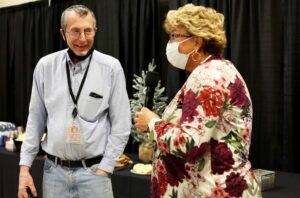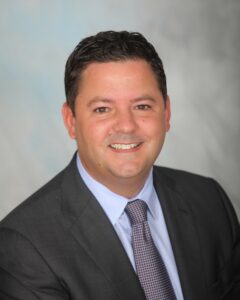accesso Technology Group Adds to Growing Roster of Venues
By Toni-Ann Burke
accesso Technology Group has added 15 North American operators to the roster of clients for its accesso ShoWare box office ticketing suite. The new partners include Silverton Casino in Las Vegas; Biltmore Theatre in Oshawa, Ontario; UIS Performing Arts Center in Springfield, Illinois; three speedways in Burlington, Washington, Fairbury, Illinois, and Seekonk, Massachusetts; the Peninsula Ballet Theatre in  San Mateo, California; and Mississippi Gulf Coast Community College in Perkinston, Mississippi. All 15 destinations and attractions are set for full integration by the end of January 2022.
San Mateo, California; and Mississippi Gulf Coast Community College in Perkinston, Mississippi. All 15 destinations and attractions are set for full integration by the end of January 2022.
“Over the last year, it was wonderful to see so many destinations, venues, and attractions around the world begin to welcome back their valued guests,” said accesso CEO Steve Brown. “We are privileged to have the opportunity to help these new partners enhance their operations and offerings with a next-generation ticketing experience.”
With more than 50 million tickets sold annually worldwide and half a billion processed transactions, the accesso ShoWare ticketing suite is a best-in-class solution designed to enhance, streamline and guide guests’ online purchasing journeys. The accesso ShoWare ticketing suite offers high-volume capabilities, white-label branding and unparalleled customer service, all packaged in one, easy-to-use turnkey solution, empowering venue and destination operators to redefine the experience for guests – whether they purchase online or on-site – while driving revenue. With more than 600 installations in theaters, concert venues, sports arenas, casinos and attractions around the world, the cloud-based Software-as-a-Service (SaaS) solution offers operators flexible, full control over the end-to-end ticketing process, including secure and simple reserved ticketing tools, as well as functionality to support spaced seating, contact tracing, donation tools, live streaming, email marketing integration and more.
Toni-Ann Burke is Communications Specialist for Curley & Pynn – The Strategic Firm®.
Bryan Christie Retires from Allen County War Memorial Coliseum After 53 Years at the Venue
By R.V. Baugus
Not enough that long-time industry veteran and former IAVM Chair Randy Brown, CVE, retired after meritorious service leading the Allen County War Memorial Coliseum in Fort Wayne, Indiana, but the end of the year also marked the retirement of the venue’s second-in-command, Bryan Christie. While we are on the subject of longevity, Bryan retired from his vice president of operations post after working at the  venue for — ready for this? — 53 years. He began working at the Coliseum while in high school with his first role a very familiar one for those breaking into the industry so young as filling sodas at the concession stand.
venue for — ready for this? — 53 years. He began working at the Coliseum while in high school with his first role a very familiar one for those breaking into the industry so young as filling sodas at the concession stand.
The venue’s Facebook page gave due credit to one so deserving: Congratulations to Bryan Christie on his last day and retirement as Vice President of Operations for the Allen County War Memorial Coliseum. For more than 50 years, Bryan has worked tirelessly, putting his heart and soul into each and everything he does for our clients, guests, and staff.
Evansville-Vanderburgh County Convention & Visitors Bureau Names Alexis Berggren as Incoming President & CEO
Evansville-Vanderburgh County Convention & Visitors Bureau, Inc. (“Visit Evansville”) announced the hiring of Alexis Berggren as incoming President and CEO. A nationwide search guided by the local Visit Evansville Commission was conducted in recruiting Berggren.
Joe Kiefer, II, the Visit Evansville Commission President, said, “We were encouraged that through the
national search process we were able to conclude on a local hire with whom we have years of experience. Alexis has served on the commission for many years and ran the Old National Events Plaza for nearly five years. Alexis’s experience, leadership, and tenure in the industry are exemplary. Visit Evansville has seen our region’s occupancy and room rates grow over the last decade with a keen focus on youth sports, including investments at Deaconess Sports Park and Goebel Soccer Complex. With the nearing completion of I-69 and recent Deaconess Sports Park synthetic turf investments, the youth sports business and convention businesses are poised to continue growing. Berggren’s vision, existing community relationships and fiscal responsibility make her well-suited for this new role. We are confident that Alexis will bring the energy, skills, and knowledge necessary to keep our momentum moving forward for years to come. We look forward to Alexis leading our team, with an anticipated start date of January 18, 2022.”
Berggren is an Evansville resident with extensive prior managerial experience in the Council Bluffs,
Portland, Los Angeles, and New Orleans markets, as well as with the Old National Events Plaza in
Evansville. Berggren is well known in the industry and has been active with many management and
development associations. She has exhibited skills in building consensus with a collaborative
environment, and she thrives on leading teams to find innovative solutions and service initiatives.
Recently, she worked directly on creating and adopting the Commission’s 10-year Master Tourism Plan.
Berggren comes with extensive facility management experience as well, which is vital to Visit Evansville
as the operator of world-class amateur sporting facilities.
Berggren’s knowledge of tourism and events has been building throughout her career in multiple
destinations, different market sizes and experience leading a local community asset in Evansville.
“I want to thank the Commission and local leaders for selecting me to lead Visit Evansville as the
President & CEO. Evansville is a growing, dynamic community that I am excited to advocate for in this
role. I will commit my skills, experience, and abilities to continue to grow this region for our population, our clients and for my family. Visit Evansville has a strong team in place with whom I am excited to collaborate, and I am certain we have the talent and skills to continue to grow this region. Evansville’s unique strengths as a central location with convention and gaming facilities, along with its large sports complexes and supportive local leadership, position it to grow as a destination market for years to come. Continued tourism industry growth improves not only the visitors’ experience but enhances the quality of life for all our region’s residents.”
Charlie Secchia to Step Down from Grand Rapids-Kent County Convention/Arena Authority
By Hilarie Carpenter, CTA
The Grand Rapids-Kent County Convention/Arena Authority (CAA) recently announced that Charlie Secchia will step down from the board after nearly 10 years of service. Secchia was appointed to the seven-member board that oversees DeVos Place, DeVos Performance Hall and Van Andel Arena on February 22, 2012.
“It has been an honor to serve on the CAA board with Charlie Secchia,” said CAA Chairman Rick Winn. “He is a tireless advocate for economic growth and his contributions to the success of the venues will have a long-lasting impact. I can’t thank Charlie enough for the unwavering support he has provided to the CAA and the facilities during his service.”
Secchia has continually recognized the importance of investing in the facilities to remain competitive  within the entertainment and convention industry and encouraged the implementation of numerous capital improvement projects. His support and guidance have been a driving force behind the success of the venues. Throughout his term, the arena, theater and convention center have experienced growth, upgrades and improvements.
within the entertainment and convention industry and encouraged the implementation of numerous capital improvement projects. His support and guidance have been a driving force behind the success of the venues. Throughout his term, the arena, theater and convention center have experienced growth, upgrades and improvements.
In 2020, the CAA partnered with Downtown Grand Rapids, Inc. on a renovated Van Andel Arena plaza with public seating areas, trees and planters, and enhancements to patron and pedestrian safety. Backstage renovations at the Arena were also completed that year, including updates to the locker rooms and dressing rooms and the creation of the West Lounge, a modern banquet space. Additional upgrades to Van Andel Arena throughout Secchia’s tenure include new upper bowl seats, installation of an LED videoboard, an upgraded electronic marquee, enhanced security systems, and new security screening equipment.
During Charlie’s term with the CAA, major upgrades were also made to DeVos Performance Hall to accommodate major touring productions such as Hamilton and Disney’s The Lion King. Most recently, the original fly rail and theatrical rigging system was replaced, new restrooms were constructed and existing restrooms were remodeled. Additionally, a new sound system was installed and the stage was upgraded to allow for larger productions.
Van Andel Arena, DeVos Place and DeVos Performance Hall experienced their best ever combined fiscal performance, including a record 42 concerts at Van Andel Arena, in Fiscal Year 2019, the last full fiscal year leading up to the COVID-19 pandemic. Events at the facilities that year attracted 1.5 million visitors to Grand Rapids, helping to support restaurants, hotels and other establishments throughout West Michigan. Before the pandemic forced their closures, Fiscal Year 2020 was on course to be the most successful year in the venues’ history.
As the venues navigate through the COVID-19 pandemic, Secchia and the CAA have worked closely with venue manager ASM Global to implement safety measures aligned with ASM Global’s VenueShield environmental hygiene program. Enhancements to the facilities include upgraded air purification with bipolar ionization equipment, installation of touchless fixtures and equipment to facilitate contactless transactions, cleaning and sanitation equipment, social distancing barriers, and personal protective equipment.
“I’m grateful for the opportunity to be part of the CAA and to contribute to these world-class facilities,” Secchia said. “I’m honored to have played a role in bringing top level entertainment and conventions to Grand Rapids. I’ve enjoyed working with the other board members and the ASM Global management team and have seen firsthand the positive impact of the venues on the West Michigan community.”
Hilarie Carpenter, CTA, is Director of Marketing for ASM Global – Van Andel Arena, DeVos Place & DeVos Performance Hall.
Swiftel Center Recognized as One of the 2021 South Dakota Great Places
By Kristina Lankow
“Midwest hospitality at its best.” That’s the philosophy at the Swiftel Center, ringing true as the facility has been awarded the 2021 South Dakota Great Place designation by the South Dakota Department of Tourism.
“The South Dakota Great Place program recognizes businesses that empower their employees with the skills and training needed to provide our visitors with exceptional customer service,” said James Hagen, Secretary of the Department of Tourism, in the official Department of Tourism press release. “These businesses have put their best foot forward to serve and help our state have an incredibly impactful tourism industry. They definitely deserve to be recognized.”
and training needed to provide our visitors with exceptional customer service,” said James Hagen, Secretary of the Department of Tourism, in the official Department of Tourism press release. “These businesses have put their best foot forward to serve and help our state have an incredibly impactful tourism industry. They definitely deserve to be recognized.”
To qualify, the Swiftel Center was required to fill out an application answering questions about hospitality training, employee recognition and customer feedback. The application required a description of the facility’s hospitality philosophy. The Swiftel Center answered with a resounding “MIDWEST HOSPITALITY AT ITS BEST.”
All the Swiftel Center team members– including full-time as well as part-time staff – are encouraged to consider the four basic needs of any guest: to feel welcome, to feel important, to be understood, and to be safe and comfortable. The staff at the Swiftel Center strives to provide excellence customer service that upholds these four needs.
Kristina Lankow is Director of Marketing at the Swiftel Center.
Do you want to receive a Front Row News weekly digest?
Categories
- Allied (861)
- Architecture (147)
- Arenas (747)
- Career (897)
- Convention Centers (895)
- Education (623)
- Events (1,544)
- Food & Beverage (193)
- Foundation (113)
- Guest Experience (1,496)
- Industry News (2,270)
- Leadership (1,888)
- Marketing (150)
- Membership (2,000)
- Music (213)
- Performing Arts Centers (454)
- Professional Development (409)
- Research (127)
- Safety & Security (442)
- Sports (763)
- Stadiums (608)
- Student (159)
- Technology (516)
- Ticketing (92)
- Touring (82)
- Trends (364)
- Uncategorized (741)
- Universities (218)
- Video (25)
- Young Professional (198)
Twitter Feed
- Twitter feed loading
Recent Posts
- Peggy Daidakis Humbly Made Convention Center History
- Welcome to Our Newest Members
- New Member Benefit! IAVM Partners with Advantage Training to Elevate Staff Readiness and Guest Experience
- Charlotte Convention Center Welcomes Two New Leaders to its Management Team
- Fort Worth Cuts Ribbon on Phase 1 of Convention Center Expansion
Categories
- Allied
- Architecture
- Arenas
- Career
- Convention Centers
- Education
- Events
- Food & Beverage
- Foundation
- Guest Experience
- Industry News
- Leadership
- Marketing
- Membership
- Music
- Performing Arts Centers
- Professional Development
- Research
- Safety & Security
- Sports
- Stadiums
- Student
- Technology
- Ticketing
- Touring
- Trends
- Uncategorized
- Universities
- Video
- Young Professional
Archives
- December 2025
- November 2025
- October 2025
- September 2025
- August 2025
- July 2025
- June 2025
- May 2025
- April 2025
- March 2025
- February 2025
- January 2025
- December 2024
- November 2024
- October 2024
- September 2024
- August 2024
- July 2024
- June 2024
- May 2024
- April 2024
- March 2024
- February 2024
- January 2024
- December 2023
- November 2023
- October 2023
- September 2023
- August 2023
- July 2023
- June 2023
- May 2023
- April 2023
- March 2023
- February 2023
- January 2023
- December 2022
- November 2022
- October 2022
- September 2022
- August 2022
- July 2022
- June 2022
- May 2022
- April 2022
- March 2022
- February 2022
- January 2022
- December 2021
- November 2021
- October 2021
- September 2021
- August 2021
- July 2021
- June 2021
- May 2021
- April 2021
- March 2021
- February 2021
- January 2021
- December 2020
- November 2020
- October 2020
- September 2020
- August 2020
- July 2020
- June 2020
- May 2020
- April 2020
- March 2020
- February 2020
- January 2020
- December 2019
- November 2019
- October 2019
- September 2019
- August 2019
- July 2019
- June 2019
- May 2019
- April 2019
- March 2019
- February 2019
- January 2019
- December 2018
- November 2018
- October 2018
- September 2018
- August 2018
- July 2018
- June 2018
- May 2018
- April 2018
- March 2018
- February 2018
- January 2018
- December 2017
- November 2017
- October 2017
- September 2017
- August 2017
- July 2017
- June 2017
- May 2017
- April 2017
- March 2017
- February 2017
- January 2017
- December 2016
- November 2016
- October 2016
- September 2016
- August 2016
- July 2016
- June 2016
- May 2016
- April 2016
- March 2016
- February 2016
- January 2016
- December 2015
- November 2015
- October 2015
- September 2015
- August 2015
- July 2015
- June 2015
- May 2015
- April 2015
- March 2015
- February 2015
- January 2015
- December 2014
- November 2014
- October 2014
- September 2014
- August 2014
- July 2014
- June 2014
- May 2014
- April 2014
- March 2014
- February 2014
- January 2014
- December 2013
- November 2013
- October 2013
- September 2013
- August 2013
- July 2013
- June 2013
- May 2013
- April 2013
- March 2013
- February 2013
- January 2013
- May 2012
- March 2012
- December 2011
- November 2011
- October 2011
Recent Comments
- Frank Bradshaw, Ph.D., CVE on John Meyer, CVE, a Tireless Advocate of Certification for Venue Professionals, Has Died
- Neil Sulkes on Hilary Hartung, Friend to Many in Venue Marketing, Has Left Us
- Jason Parker, CVE on The Devastation of Hurricane Helene and How We Can Support One Another
- Larry Perkins on Touhey Testifies Against Speculative Ticketing Before Congressional Subcommittee
- Peter Secord on Major Players for Planned Elkhart Amphitheater Were in the Mix at VenueConnect
